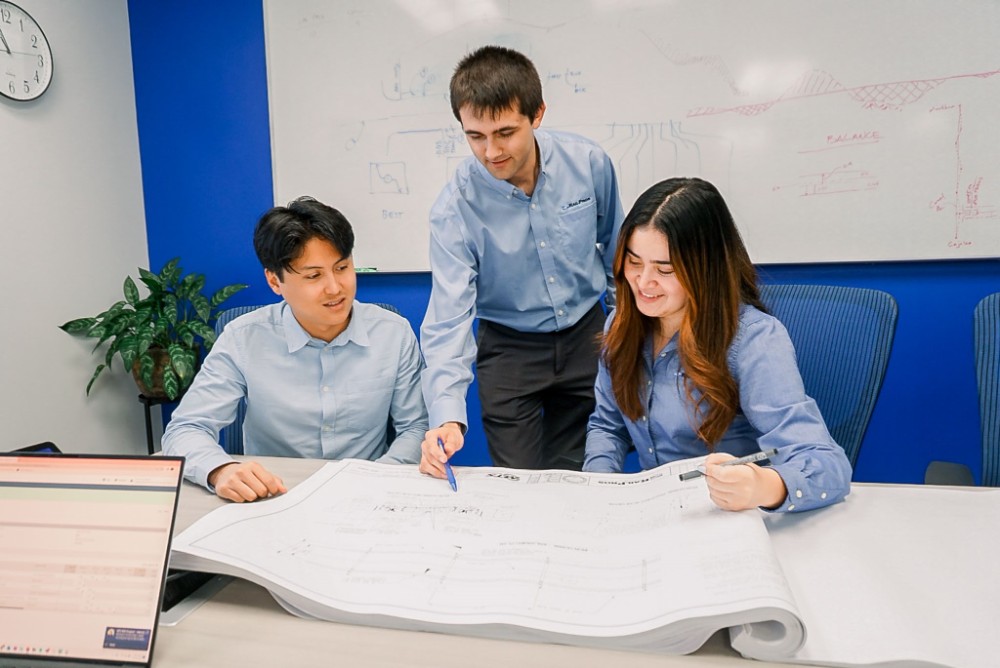If you’re interested in working on a variety of projects, solving unique challenges, and improving systems that impact people every day, then a career as a rail engineer might be the right choice for you.
Rail transportation systems support the supply chain by moving raw materials and consumer goods, and they give people access to safe and efficient transportation. Many different types of infrastructure are needed to make this happen, which is where rail engineers come in. Rail engineers (not to be confused with locomotive engineers, who drive trains) design, construct, maintain, and improve the infrastructure that allows rail networks to operate. They come from many different engineering backgrounds, including civil, structural, electrical, and mechanical. With many different types of infrastructure needed for rail systems, rail engineers have a wide range of areas to which they can apply their skills.
Types of Infrastructure
1. Track and Vehicles
Rail engineering is unique in that it involves a system where the vehicle and supporting infrastructure are highly interdependent. Railroad track — one of the most crucial elements of rail infrastructure—must be carefully engineered to support and distribute the weight of rail vehicles, guide the vehicles, and perform drainage functions. Railcars and locomotives must also be designed and maintained to interact with the track safely and efficiently.
2. Facilities
Rail transportation involves its own set of facilities, such as stations, terminals, maintenance and repair shops, fueling and servicing facilities, and yards. Rail engineers contribute to complex design and construction projects on these facilities, which include elements like multiple tracks, switches and signals, pedestrian and vehicle access ways, and ADA compliance.
3. Systems and Signals
The railroad industry also has a unique set of control systems. Traffic control systems and signals communicate detailed information about train locations to allow for traffic management and provide information to train operators regarding how to operate their train. Rail engineers deal with the physics of live rail systems, working with concepts such as train stopping distance to ensure that rail vehicles remain appropriately distanced in both space and time. “Systems” also includes equipment for ongoing communications with passengers and crews, as well as traction power propulsion via electrified third rails running alongside the track and overhead wires called catenary lines.
4. Civil Infrastructure
Rail engineers also work on civil infrastructure that rail networks rely on, such as earthwork, retaining walls, bridges, signal and catenary structures, viaducts, and tunnels.
Day-to-day Work
When working on projects, rail engineers are involved in initial phases such as analysis, planning, and design, as well as later phases like construction and commissioning. Rail engineers put their problem-solving abilities to work on tasks such as:
- Designing railroad crossings
- Developing signal improvements
- Performing design reviews for terminal expansions
- Preparing structural design drawings for rail bridges, tunnels, etc.
- Ensuring ADA compliance at metro stations
- Designing railroad track
- Developing station buildings with platforms, canopies, lights, and benches
- Designing streets, utilities, grading, drainage, and retaining walls
- Designing traction power systems
The rail industry also has opportunities for engineers to move into leadership roles and to manage large rail-related projects and programs, performing tasks such as:
- Coordinating with organizations related to the project
- Monitoring compliance with project requirements
- Leading preconstruction meetings
- Assisting third parties who need to access a railroad’s land (known as the right of way)
- Managing construction by solving problems that arise in the field, answering contractors’ questions, and performing other tasks
Career Opportunities
As you might expect, one way rail engineers find work is by working for a railroad. However, there are also many rail engineering jobs in government departments and research institutions, as well as with consulting companies that specialize in railroad services. RailPros, for example, employs high-performing engineers to support its clients on a variety of rail projects across North America.
If you’re interested in learning to apply your skills as a rail engineer, a rail engineering internship can provide your pathway into the industry.
